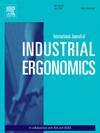The effect of feed force on vibration and productivity in hammer drilling: A machine-independent analysis excluding the effect of motor speed reduction
Abstract
Construction workers usually use hammer drills to drill holes into hard materials for anchors or concrete screw installations. Vibration emission in the drilling process can cause various occupational diseases. Workers influence this process mainly by varying the feed force. A feed force variation in hammer drilling causes a machine-specific motor speed reduction. As it is impossible to distinguish the effect of feed force on vibration and productivity from machine-specific motor speed reduction effects, the findings of various studies on hammer drilling vary considerably. The goal of this study therefore is to identify the feed force effect on vibration and productivity, thus excluding machine-specific effects due to a motor speed reduction. We modified a hammer drill to keep motor speeds constant over a wide feed force range and conducted a drilling study using an automated drilling test rig. The drilling productivity increased with higher feed force, whereas machine-specific motor speed reduction led to a decrease. Evaluated with Cohen's f, both factors had a large effect (feed force: f = 0.62, motor speed: f = 0.42). An increasing feed force led to a higher vibration emission with a large effect (f = 1.03). Motor speed reduction reduced vibration with a small effect (f = 0.21). Further hammer drill studies are needed to specify machine-specific motor speed reductions for comparing the results of different studies. The isolated effects could be used by manufacturers to implement control strategies for automatic optimizations. Based on the feed force, motor speed could be varied to optimize vibration or productivity.

 求助内容:
求助内容: 应助结果提醒方式:
应助结果提醒方式:


